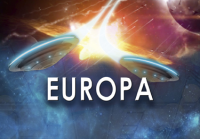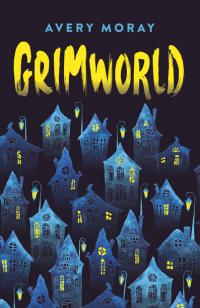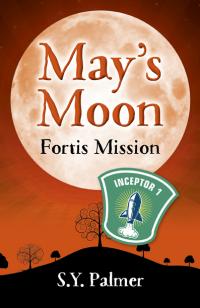
Adoption Experience: Writing Our Shared Story
By Daniel Ingram-Brown author of Bea's Witch
Author Daniel Ingram-Brown writes about how being an adoptive father shaped his latest novel, Bea’s Witch: A ghostly coming-of-age story.
As an adoptive dad, I was disappointed with representations of adoption in literature – so I wrote my own book!
In June 2013, I officially became a father, but my son was already seven-and-a-half years old, already a little person shaped by an often-difficult life, one marked by scars. We were starting the adventure of being an adoptive family together, but this adventure – like the ones recounted in many stories – was forced onto the person at the centre of events through a set of circumstances that were beyond their control; events that were dark and sad: neglect, separation and loss.
As a writer, I have always drawn on personal experience to tell stories. Even when writing fantasy fiction – tales of giant spiders, time enchantments or renegade pirates – there’s always a core of real experience powering the narrative; be it my own emotional responses; memories of places, people or events; or themes I’ve reflected upon and would like to talk about. After completing my fantasy adventure trilogy, The Firebird Chronicles, I knew I wanted to write about adoption, to transform my own experience of being an adoptive father into a story that would shed light onto a part of our society that is often obscured or misunderstood. I wanted to put centre stage the adopted child, a figure who, both in real life and in fiction, is often neglected, ignored or misrepresented.
And so my short novel, Bea’s Witch: A ghostly-coming-of-age story, was born. The story tells of an adopted girl, Beatrice, who runs away on the eve of her twelfth birthday only to encounter the ghost of England’s most famous witch – Mother Shipton – the 16th century, Yorkshire prophetess. Trapped together, the two of them trade stories, reluctantly on Bea’s part, but Mother Shipton coaxing, guiding and provoking. They begin to realise they have a connection across the centuries – both born to young mothers, both fostered, both bullied and ostracised, both with a strong sense of justice. The encounter is healing for Bea. It doesn’t fix everything or lead to a false happy ending that erases the scars she carries, but it helps her begin to take control of a story that has so often been stolen from her. She learns that by owning her whole story – the good and the bad, the loss and the hope – the future can be rewritten.
When I first had the idea for the story, I was excited. It was one of those writing moments that seemed to ring with synchronicity – a feeling of things coming together. The story was going to be about parents and children, and here was a woman with the title ‘Mother’ – a woman who never had her own children but to whom people came for guidance; a sort of universal mother figure. I rushed home to tell my son about it, to ask him what he thought about me writing the story, only for him to exclaim, “I wrote that story at school a couple of weeks ago. I read it to you!” He proceeded to recount the tale he'd written of a child running away and hiding in Mother Shipton’s cave. It was almost identical to the story I had in my head. I must have locked his tale away in my subconscious, ready for it to emerge as ‘mine’. Now, I recognise that the story is ‘ours’, shaped not only by that initial idea, but by living together and learning to love one another as a family.
I was nervous, initially, to share Bea’s Witch, especially with adoptees. I was worried that, as my experience is only from the perspective of an adoptive father, I might misrepresent those who have first-hand experience of losing a birth parent and being forced to adjust to life with a new family. I acknowledge that my understanding is, inevitably, limited, and that a single story can never generalise to all experiences of adoption, as wide and as diverse as they are. But thankfully, those adoptees who have read the story so far have told me that it does resonate with their own experience and have expressed thanks for highlighting the theme of adoption.
One of the main things I’ve learnt from writing Bea’s Witch is that there is a balance to be struck when thinking about adoption. Many adoptees don’t want to be seen as ‘different’. As Bea herself says after a teacher makes a well-meaning comment, “Why did she have to single me out?”, or as she thinks after overhearing a conversation between her social worker and her adoptive mother, “So I’m a problem to be solved am I?”. On the other hand, I know many adoptees want the trauma they’ve experienced to be recognised. When my son first moved in with us, people often said, “He’s lucky to have you”. Although I understand the sentiment and know that the comment was meant as an encouragement, it shows how we often underestimate the terrible circumstances that have led, in most cases, to a child being removed from a birth parent. Nobody in that situation is lucky. It is a rupture that can never be undone, that will leave a scar which will probably never fully heal. It’s important to recognise this, for it to be seen and acknowledged. It is important when thinking about how best to support those involved in the adoption system – important for schools, community services and wider society. And so, there is a balance to be struck between these two responses – to hear but not to ‘other’.
I’ve found Jeanette Winterson’s writing helpful in understanding this balance. In her book Why Be Happy When You Could Be Normal? she talks about her experience as an adoptee and about the wound that both adoptees and birth parent carry. She turns to stories for insight, to those characters who have been wounded – Prometheus, Gulliver, the Fisher King, Jesus in his interaction with doubting Thomas – even Harry Potter, with his lightning bolt scar. What we notice from such stories, she says, is the “nearness of the wound to the gift”. She compares the experience of the adopted child to reading a book where the first few pages are missing. But, she says, “This isn’t of its nature negative. The missing part, the missing past, can be an opening, not a void”.
I hope that this balance, between recognising the challenges adoptees face but also leaving space for something hopeful, is something we can all learn from. I hope, too, it’s a balance I have been able to strike in Bea’s Witch. To a greater or lesser extent, we all experience separation and long for integration and wholeness – the lost homes and unfamiliar lands of children’s literature attest to this. Perhaps stories about adoptees or orphans show these challenges writ large. In doing so, perhaps they provide an opening for each of us to the possibility of a journey towards healing and integration. No one story can do this alone, though. Bea’s Witch is the record of a particular few weeks in a girl’s life – a time of struggle and upheaval – and so its focus is necessarily on the challenges she faces. But that doesn’t reflect the whole of her life. The balance between the poles of recognising but not othering can only be struck through multiple stories, some with a focus on anger and justice, others with a focus on healing and reconciliation; stories told by adoptees, birth parents, adoptive parents, social workers and many others. I hope Bea’s Witch will take its place in this cultural conversation and will encourage others to tell their own stories. I have already worked with two secondary schools using the book as a prompt for young writers to discover their own voices and to explore the themes of identity, family, loss, belonging and hope.
In the end, Bea’s Witch was written as a gift to my son; a way of exploring something of our shared experience; an attempt, as writing often is, to step into another’s shoes and see the world from their perspective. Using fiction to do that has allowed me to protect his own, private story – he is very different to Bea.
My son is a teenage boy now, nearing the age of sixteen. He and my wife were the first to read the final book. His verdict: “Well, it was better than I expected, Dad.”
From a teenage boy, I think that counts as high praise. Thanks, Son, I’ll take that.
CLICK ON BOOK COVER TO READ NOW
You may also enjoy
If Evolution is a journey then where does the journey end...
Our Street Books publishes fiction and non-fiction books for children of all ages. Our authors deliver a potent mix of fantastic, rip-roaring adventure and fantasy stories to excite the imagination; spiritual fiction to help the mind and the heart; humorous stories to make the funny bone grow; historical tales to evolve interest; and all manner of subjects that stretch the imagination, grab the attention, inform, inspire, and keep children turning the pages.
Categories:
0 comments on this article


















